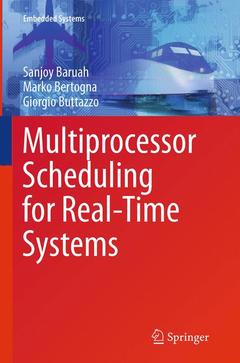Description
Multiprocessor Scheduling for Real-Time Systems, Softcover reprint of the original 1st ed. 2015
Embedded Systems Series
Language: English
Subjects for Multiprocessor Scheduling for Real-Time Systems:
Publication date: 09-2016
Support: Print on demand
Publication date: 01-2015
228 p. · 15.5x23.5 cm · Hardback
Description
/li>Contents
/li>Comment
/li>
This book provides a comprehensive overview of both theoretical and pragmatic aspects of resource-allocation and scheduling in multiprocessor and multicore hard-real-time systems. The authors derive new, abstract models of real-time tasks that capture accurately the salient features of real application systems that are to be implemented on multiprocessor platforms, and identify rules for mapping application systems onto the most appropriate models. New run-time multiprocessor scheduling algorithms are presented, which are demonstrably better than those currently used, both in terms of run-time efficiency and tractability of off-line analysis. Readers will benefit from a new design and analysis framework for multiprocessor real-time systems, which will translate into a significantly enhanced ability to provide formally verified, safety-critical real-time systems at a significantly lower cost.
Introduction: background, scope, and context.- Preliminaries: workload and platform models.- Preliminaries: scheduling concepts and goals.- A review of selected results on uniprocessors.- Implicit-deadline (L&L) tasks.- Partitioned scheduling of L&L tasks.- Global dynamic-priority scheduling of L&L tasks.- Global Fixed-Job-Priority scheduling of L&L tasks.- Global Fixed-Task-Priority scheduling of L&L tasks.




